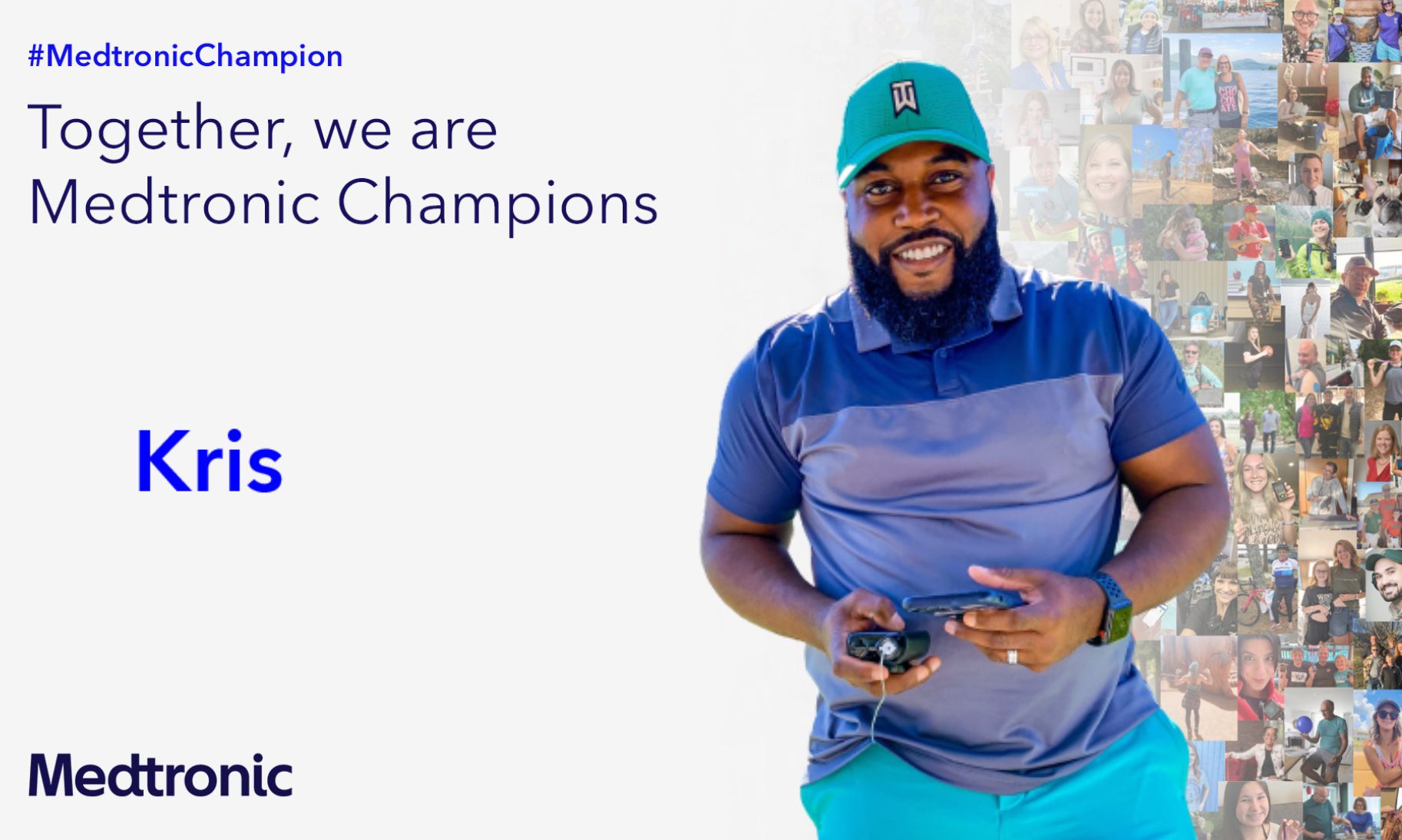Now what? Five things to know after a type 1 diabetes diagnosis

This year, 1.5 million people will be diagnosed with type 1 or type 2 diabetes according to the American Diabetes Association (ADA). If you have suddenly found yourself among this group, you should know you are far from alone. Today, there is a well-paved road to normalcy, and diabetes can take a back seat to what you want to accomplish and the life you want to live. But, like so many others, you might be wondering how to take your first steps down that path. The good news is, people with diabetes (PWD) and the healthcare providers who support them, have been answering this question for a while. As you start your journey, you will find a wealth of knowledge and experience at your disposal to better support you through the highs and lows of life with diabetes. To start, here are five things to know after your type 1 diabetes diagnosis.
1. What Your Diagnosis Actually Means
The first thing you can do after a type 1 diabetes diagnosis is to learn as much as you can about it. You are likely feeling anxiety or fear about what this diagnosis means for your life. Knowing more about diabetes can ease those feelings and breed positivity. The CDC explains that with type 1 diabetes, your pancreas doesn’t make insulin or makes very little insulin. Insulin is a hormone that helps blood sugar enter the cells in your body where it can be used for energy. Without insulin, blood sugar can’t get into cells and builds up in the bloodstream. High blood sugar is damaging to the body and causes many of the symptoms and complications of diabetes. A type 1 diabetes diagnosis means your immune system is actually destroying the cells in your pancreas that make insulin. There is no consensus on exactly why this happens, but it is not a result of diet or lifestyle habits.
2. How to Handle Your Insulin Doses
Your doctor will prescribe the correct dosage and type of insulin for your body and lifestyle. This choice will be based on a number of factors, including how quickly the insulin can lower your blood sugar, the time to maximum strength, and how long it stays present in your system. Depending on your activity level, your age, and nutrition, your insulin should work for you. No matter what kind you choose, this insulin is designed to act the same as the hormone your body produces. Each time you add insulin to your bloodstream, your body has the ammunition it needs to keep your glucose in line. But how do you know when your body needs that help?
3. How to Test Your Blood Sugar Levels
When you are first diagnosed, you’ll probably leave your doctor’s office with a blood glucose monitor, also called a glucometer. With a small amount of blood - usually from the tip of your finger - your glucometer will analyze your blood sugar levels to give you a blood glucose reading. If your blood glucose reading is high, you will need insulin to lower it. And if your glucose reading is low, you will need sugar to raise it. Blood sugar levels change all the time, so it is important to test regularly and record your readings. As technology has improved, so have the number of advanced options to measure your blood glucose, such as the Guardian ConnectTM CGM (continuous glucose monitor) system. Devices like these automatically read your sugar levels and can connect to your smartphone to track your glucose levels over time, helping you better understand your natural rhythms and the impact carbs and insulin have on your glucose levels. Talk to your doctor to put together a plan for both high and low blood sugar levels and learn to recognize the warning signs unique to you. Preparation is half the battle.
4. The Tools to Manage Your Type 1 Diabetes Diagnosis
There are a lot of products to choose from to treat type 1 diabetes. Most fall within these main groups:
- Insulin syringes: The original way of injecting insulin, syringes come with vials of insulin and a needle for injection. Typically, you will need to administer and keep track of your insulin manually if using this method, known as MDI (multiple daily injections) therapy.
- Insulin pens: An evolved form of the syringe method, insulin pens make it easier to inject yourself and usually come with a dial to choose your correct dosage a little more easily. Some pens, like InPenTM, feature smart* technology to manage MDI therapy and can send you insulin reminders through a connected app.
- Glucometers: Simple blood sugar testing devices that uses a lancet to lightly prick your skin to obtain the blood. A drop of blood is placed onto a test strip and your glucometer calculates the amount of glucose in your blood. The glucometer kit may include a logbook or you might be able to download your glucose readings onto your computer.
- Continuous glucose monitors: A CGM works through a tiny sensor inserted under your skin, usually on your belly or arm. The sensor measures your interstitial glucose level, which is the glucose found in the fluid between the cells, and tests glucose every few minutes. A transmitter wirelessly sends the information to a monitor, which may be part of an insulin pump, or a separate device.
-
Insulin pumps: These devices connect to your body through a thin, flexible tube and deliver a regular drip of insulin to your bloodstream to match your body’s needs.
5. How Your Support Team Can Help
In the end, nothing replaces the support of those around you when dealing with a type 1 diabetes diagnosis. Along with your friends and family, your diabetes care team will be your most valuable asset on this journey. Your doctor will schedule regular checkups to ensure your treatment is on the right track and refer you to specialists who can help. There are also numerous communities online and in the real world that provide support and advice for PWD newcomers. Relying on your support network can make all the difference in maintaining a positive attitude as you learn to manage type 1 diabetes.
What’s Next?
Take a deep breath and realize that you are still in control. Arming yourself with knowledge is the most powerful method you have to manage that new type 1 diabetes diagnosis. With a good plan and an empathetic, engaged circle of support, there’s nothing that can stand in your way.
As Medtronic Diabetes Ambassador Kelly says about her diagnosis: “I was diagnosed at age thirteen, the complicated age where my friends and I were always trying to prove to our parents (and ourselves) that we could understand adult-like issues. Almost instantly, my friends became extremely interested in what diabetes was and, to educate everyone around me, my mom held a few "information sessions" where she would talk about what wasn't happening in my body and what to do when I had low blood sugar. My friends and teammates were always very attentive, which surprised me because these presentations sometimes involved big medical terms that I was just beginning to understand myself. After the first session, however, I realized that most of the kids were there for the array of snacks that my mom provided (to this day she is known as the "Snack Queen"). In the end, all that mattered was that this was how my pre-teen friends felt they could show their support and I appreciated their attempt to make sense of my situation. This was the first, but definitely not the last, time I realized that even though I was anatomically alone because of diabetes, I would never be left physically alone to fight this life-long battle.”
If you are new to the world of diabetes, take a moment and connect with one of the experienced Medtronic Diabetes Ambassadors. They are always willing to share tips and tricks and a word of support when needed!
And for those readers who have been living with diabetes a while, share your ‘new-to-diabetes-tips’ in the comments below!
* Smart insulin pens connect to a mobile app to provide dosing calculations, reminders and CGM system integration.
IMPORTANT SAFETY INFORMATION
– Medtronic Diabetes insulin infusion pumps, continuous glucose monitoring systems, smart insulin pens and associated components are limited to sale by or on the order of a physician and should only be used under the direction of a healthcare professional familiar with the risks associated with the use of these systems.
– Successful operation of the insulin infusion pumps and/or continuous glucose monitoring systems / smart insulin pens requires adequate vision and hearing to recognize alerts and alarms.
Important Safety Information - Guardian Connect CGM
The Guardian Connect system requires a prescription and is indicated for continuous or periodic monitoring of glucose levels in the interstitial fluid under the skin, in patients (14 to 75 years of age) with diabetes mellitus. The system is intended to complement, not replace, information obtained from standard blood glucose monitoring devices, and is not recommended for people who are unwilling or unable to perform a minimum of two meter blood glucose tests per day, or for people who are unable or unwilling to maintain contact with their healthcare professional. The system requires a functioning mobile electronic device with correct settings. If the mobile device is not set up or used correctly, you may not receive sensor glucose information or alerts. For complete details of the system and its components, including warnings, contraindications, and precautions, please consult the user guide at http://www.medtronicdiabetes.com/support/download-library/user-guides and http://www.medtronicdiabetes.com/importantsafetyinformation. The system is intended to complement, not replace, information obtained from standard blood glucose monitoring devices. All therapy adjustments should be based on measurements obtained from standard blood glucose monitoring devices and not on values provided by the system.
Important Safety Information - InPen Smart Insulin Pen System
The InPen requires a prescription. It is a home-use reusable pen injector for single-patient use by people with diabetes under the supervision of an adult caregiver, or by a patient age 7 and older for the self-injection of a desired dose of insulin. The pen injector is compatible with Lilly Humalog® U-100 3.0 mL cartridges, Novo Nordisk Novolog® U-100 3.0 mL cartridges, and Novo Nordisk Fiasp® U-100 3.0 mL cartridges and single-use detachable and disposable pen needles (not included). The pen injector allows the user to dial the desired dose from 0.5 to 30 units in one-half (1/2) unit increments. The InPen dose calculator, a component of the InPen app, is indicated for the management of diabetes by people with diabetes under the supervision of an adult caregiver, or by a patient age 7 and older for calculating an insulin dose or carbohydrate intake based on user entered data. For an insulin dose based on amount of carbohydrates, a healthcare professional must provide patient-specific target blood glucose, insulin-to-carbohydrate ratio, and insulin sensitivity parameters to be programmed into the software prior to use. For an insulin dose based on fixed/variable meal sizes, a healthcare professional must provide patient-specific fixed doses/meal sizes to be programmed into the software prior to use. To learn more, visit bit.ly/InPenSafety.



